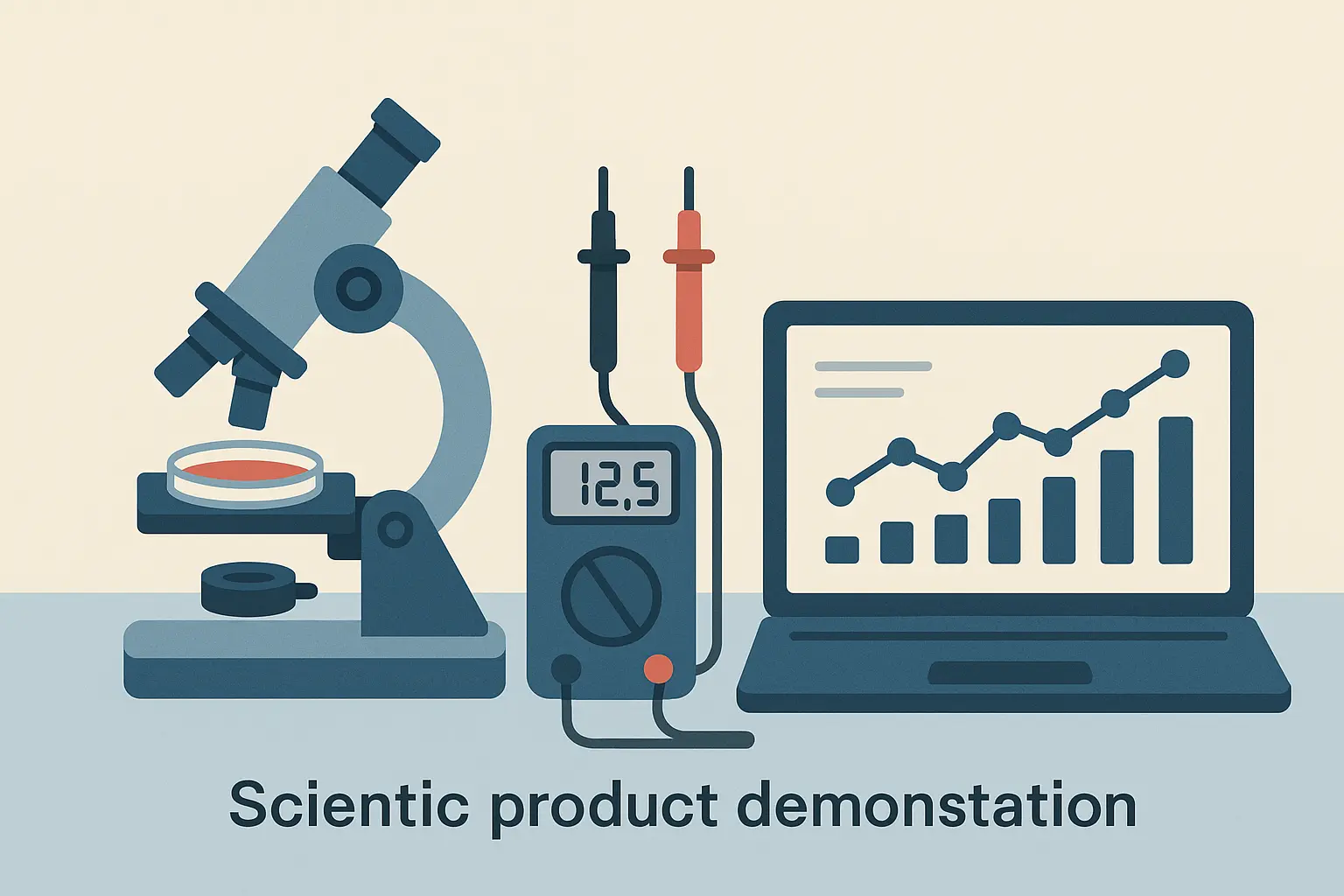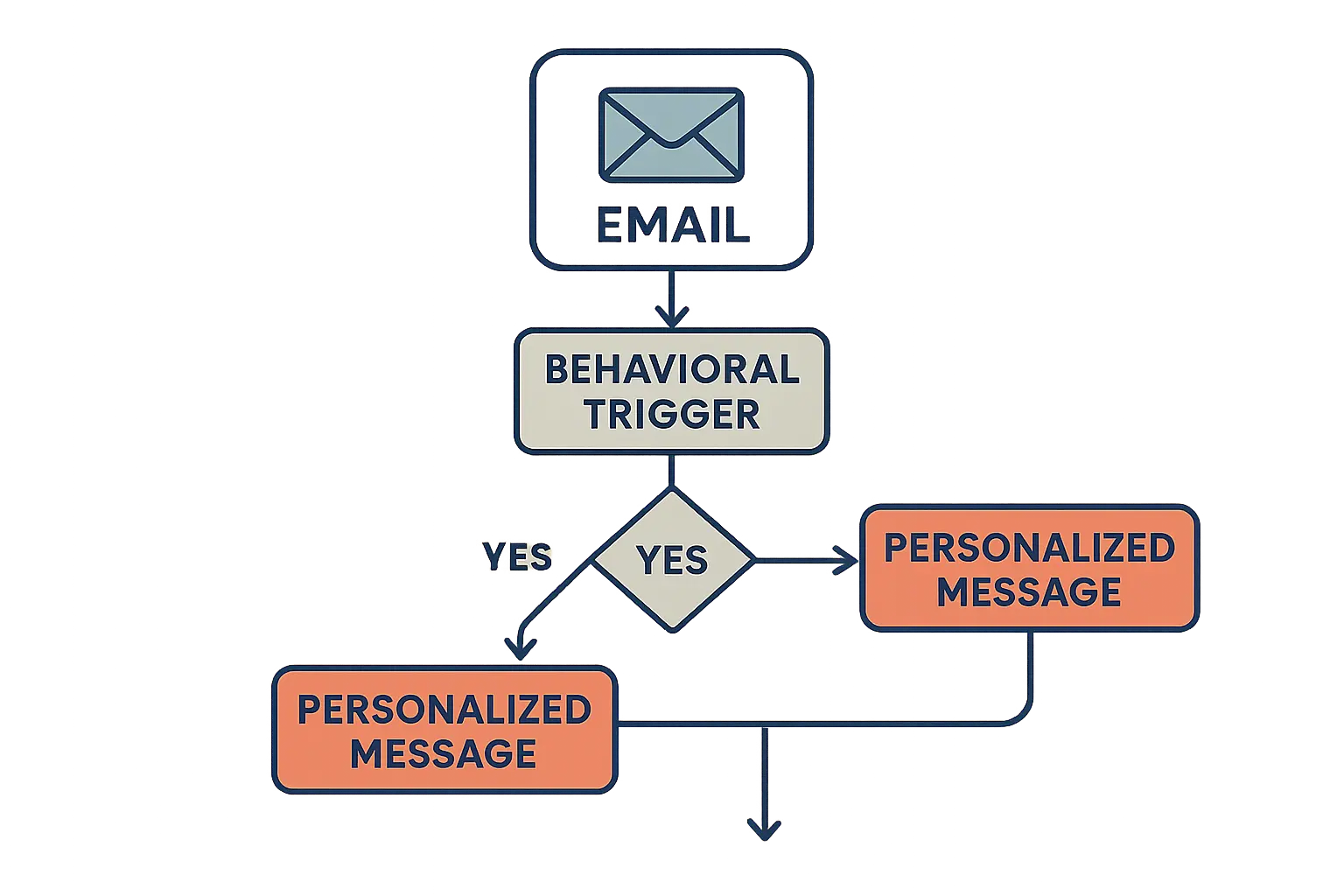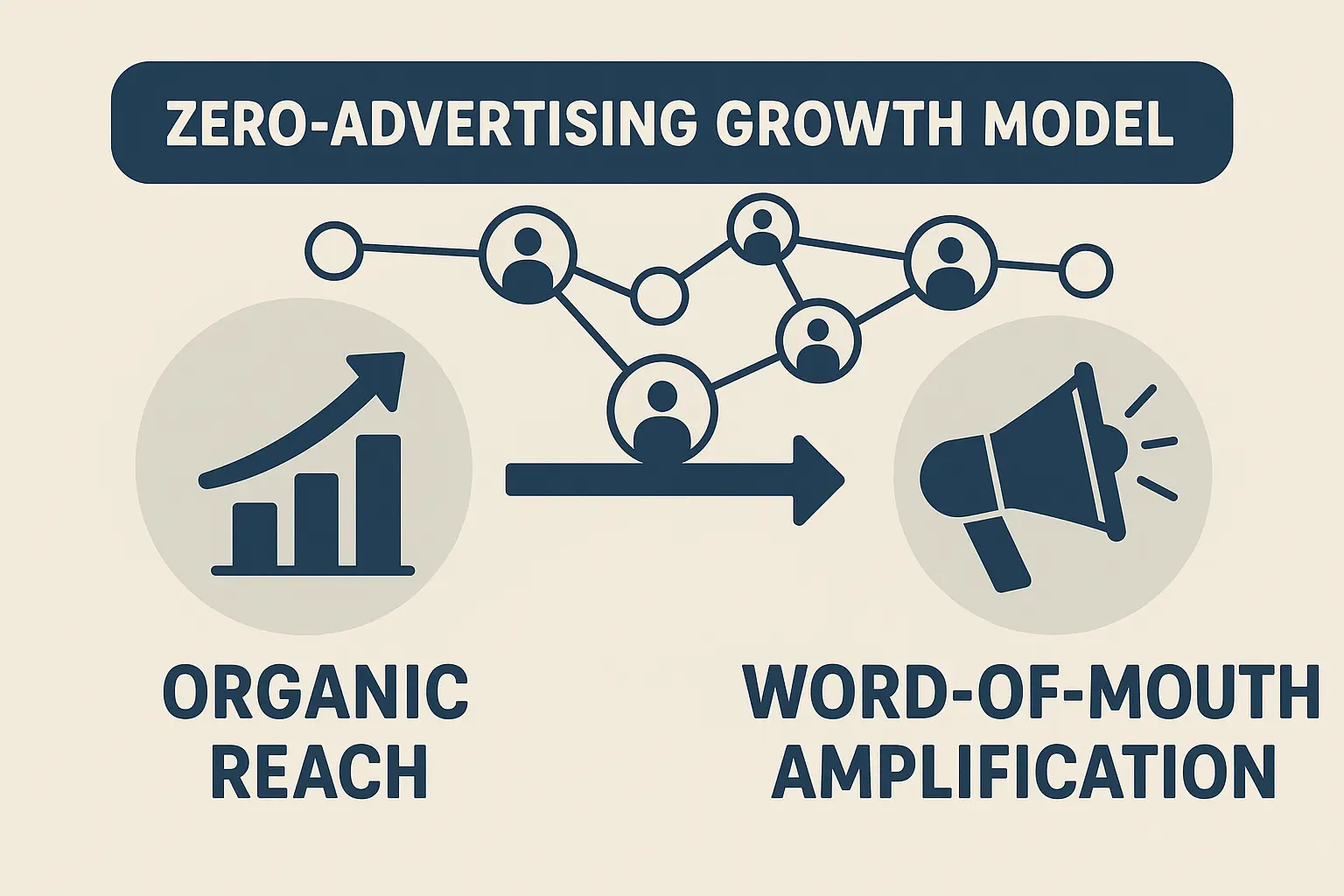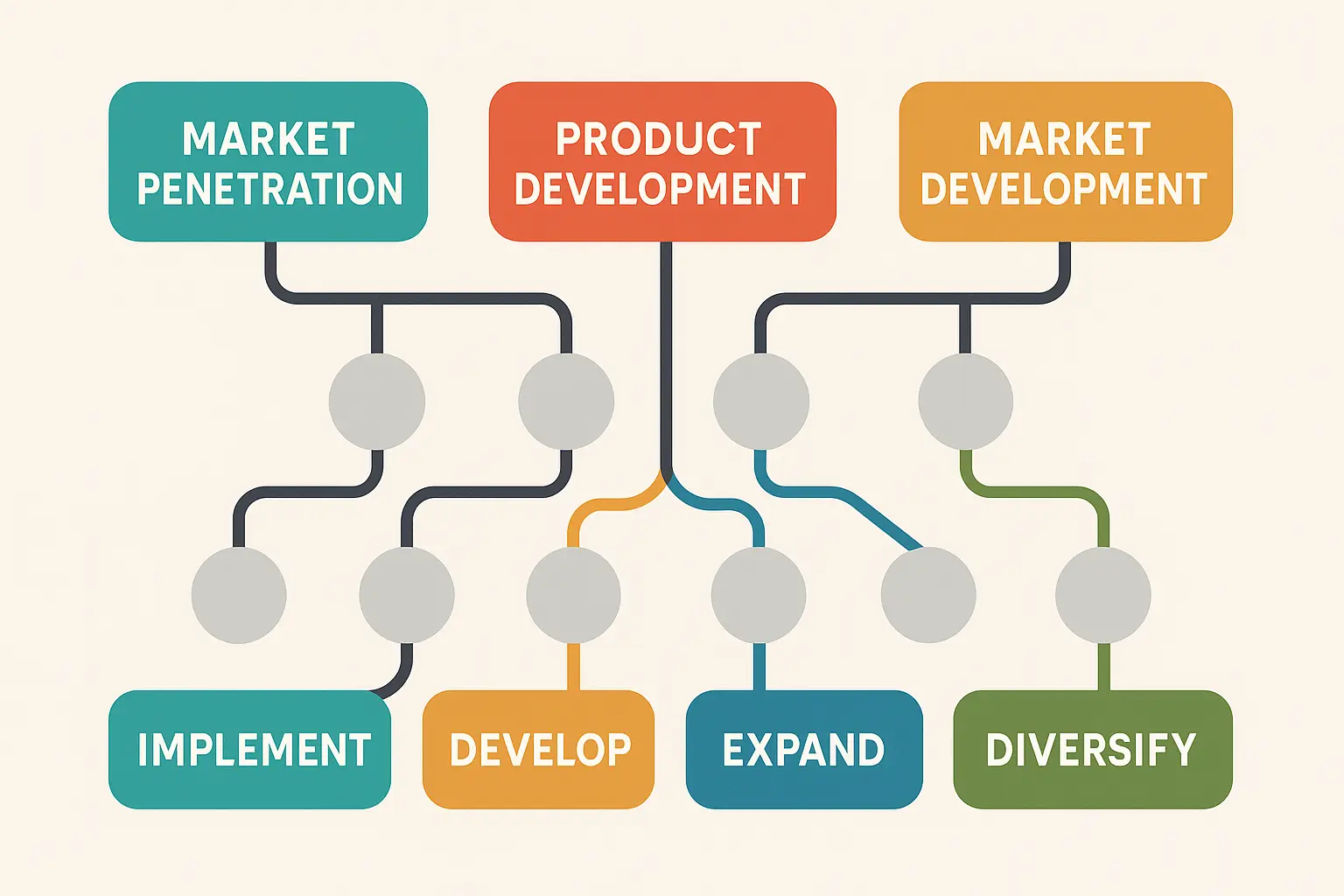I’ve been tracking this stuff for years, and here’s what I’ve noticed: companies using data-driven marketing analytics see conversion rate improvements of up to 30%, with some achieving revenue increases exceeding 25% within just three months. After digging through way too many marketing campaigns (seriously, my browser history is embarrassing), I can tell you that most case studies are just fancy sales pitches wearing a lab coat. But every now and then, you find campaigns that actually moved the needle in ways that make you sit up and take notice.
What separates the winners from the wannabes? Real data, measurable outcomes, and strategies you can actually replicate (without needing Bezos money). I’ve analyzed hundreds of campaigns to bring you 25 that delivered genuine results across five key marketing categories.

Table of Contents
-
What Makes a Marketing Case Study Worth Your Time
-
The 5 Categories That Matter Most
-
Content Marketing & SEO Success Stories
-
Social Media & Influencer Marketing Wins
-
Paid Advertising & PPC Breakthroughs
-
Email Marketing & Automation Champions
-
Integrated Digital Marketing Campaigns
-
How to Apply These Lessons to Your Business
-
Final Thoughts
TL;DR
-
Look for case studies with real money data, not vanity metrics that sound impressive at cocktail parties
-
The best campaigns actually solve specific business problems instead of just “raising awareness”
-
Technology integration separates the pros from the amateurs every single time
-
Scalability matters more than flashy creative that wins awards but tanks your budget
-
If everything went perfectly in their story, you’re probably reading marketing fiction
-
Educational content consistently beats “Buy our stuff!” messaging
-
Personalization at scale drives the highest conversion rates (when done right)
-
Community-building creates more sustainable growth than throwing money at ads
What Makes a Marketing Case Study Worth Your Time
Let’s be real – most marketing case studies are basically expensive advertisements disguised as educational content. They cherry-pick metrics, ignore context, and present results that sound impressive but can’t be replicated unless you happen to have a few million lying around. Here’s what I actually look for when deciding whether a case study is worth my time:
ROI and Performance Metrics That Actually Matter
Real case studies show you the money. I’m talking conversion rates, revenue increases, cost per acquisition improvements – numbers that directly impact whether you can pay your rent. The best ones also explain how they actually tracked results across multiple touchpoints, because let’s face it, figuring out which ads actually worked is harder than it sounds.
When analyzing performance data, understanding proper measurement frameworks is crucial – our comprehensive marketing ROI calculator helps establish baseline metrics for comparing case study results against your own campaigns.
|
Metric Type |
What It Measures |
Why It Matters |
Red Flags |
|---|---|---|---|
|
Revenue Growth |
Direct sales impact |
Shows actual business value |
Missing baseline data |
|
Conversion Rate |
Action completion percentage |
Indicates campaign effectiveness |
Cherry-picked timeframes |
|
Customer Acquisition Cost |
Cost to acquire new customers |
Measures efficiency |
Ignoring lifetime value |
|
Return on Ad Spend (ROAS) |
Revenue per dollar spent |
Direct ROI measurement |
Short-term focus only |
|
Customer Lifetime Value |
Long-term customer worth |
Sustainable growth indicator |
Unrealistic projections |
Timeline matters too. Did they see results in 30 days or 18 months? Short-term wins are great for your ego, but sustainable outcomes tell you whether the strategy actually has legs or if they just got lucky.
Strategic Alignment With Real Business Goals
Every campaign should solve a specific problem. Brand awareness campaigns look different from lead generation efforts, which look different from “please stop our customers from leaving” plays. The most valuable case studies clearly define what they were actually trying to accomplish upfront and measure success against those specific goals.
Here’s the thing – target audience alignment is crucial. A B2B SaaS company’s social media strategy won’t work for a consumer packaged goods brand, no matter how impressive those engagement numbers look on paper.
Execution Quality You Can Actually Assess
Data-driven approaches beat creative hunches every single time. Look for case studies that demonstrate hypothesis testing, A/B experiments, and iterative improvements based on performance data – not just “we had this brilliant idea and it worked perfectly.”
Technology integration separates amateur hour from professional execution. The campaigns that leverage AI, automation, and advanced analytics consistently outperform those relying on manual processes and hoping for the best.
Scalability and Replicability Factors
Resource requirements tell you whether a strategy is realistic for your situation or just marketing fantasy. Some campaigns require massive budgets and specialized teams, while others can be executed with basic tools and a small team that doesn’t hate each other.
Market transferability is often overlooked. A strategy that works in Silicon Valley might flop completely in the Midwest, and what succeeds in the US might fail spectacularly internationally. Ask me how I know.
Transparency and Credibility Indicators
The best case studies acknowledge challenges and explain how obstacles were overcome. If everything went perfectly from day one, you’re probably reading marketing fiction designed to sell you something.
Third-party validation adds credibility. Independent verification of results, detailed methodology explanations, and long-term performance tracking separate legitimate success stories from promotional content that sounds too good to be true.
The 5 Categories That Matter Most
After analyzing hundreds of campaigns (and trying to copy way too many of them), I’ve identified five categories where the most impactful marketing actually happens. Each category serves different business objectives and requires distinct skill sets, but the best companies don’t just pick one – they get good at multiple areas.

Content marketing and SEO drive long-term organic growth (if you can wait that long). Social media and influencer marketing build communities and brand awareness. Paid advertising delivers immediate, measurable results when you don’t screw up the targeting. Email marketing nurtures existing relationships and drives repeat business. Integrated campaigns combine multiple channels for amplified impact.
The companies that consistently win don’t just throw darts at a board and hope something sticks – they develop competencies across all five and coordinate efforts so their marketing actually works together instead of fighting itself.
Content Marketing & SEO Success Stories
1. HubSpot’s Inbound Marketing Revolution
HubSpot didn’t just create content – they basically invented an entire educational ecosystem that positioned them as the go-to authority on inbound marketing. Their strategy was methodical in a way that makes other marketers either inspired or slightly nauseous.
The execution was systematic: over 4,000 blog posts covering marketing, sales, and customer service topics, free tools like Website Grader and Email Signature Generator that people actually used, and educational courses with certifications that people put on their LinkedIn profiles (and actually felt proud about it).
Similar to HubSpot’s approach, developing high-impact blog topics that address specific audience pain points can establish your brand as an industry authority while driving organic traffic growth.
Results speak for themselves: 100M+ annual website visitors and 100,000+ customers globally. The key insight? Educational content as a lead magnet builds industry authority that translates directly into sales – revolutionary concept, right?
HubSpot’s Content Creation Framework: They developed a systematic approach where each blog post targeted specific buyer personas at different funnel stages. For example, their “Marketing Statistics” posts targeted awareness-stage prospects, while “How to Use HubSpot” tutorials served existing customers. This content mapping strategy ensured every piece served a specific business purpose while providing genuine value to readers. Honestly, this level of organization makes most content strategies look like they were planned on napkins.
2. Airbnb’s User-Generated Content Strategy
Airbnb understood something most companies completely miss: authentic customer stories outperform polished marketing content every single time. They built their entire content strategy around leveraging real user experiences to build trust and authenticity – instead of hiring expensive agencies to create fake lifestyle content.
Their professional photography program for hosts ensured quality visuals, while the “Belong Anywhere” campaign featured genuine user stories that didn’t sound like they came from a marketing department. Social media integration with hashtag campaigns amplified reach organically.

The numbers are staggering: 500M+ guest arrivals and $38B+ in host earnings. User-generated content doesn’t just save money on content creation – it builds trust that traditional advertising can’t match, no matter how much you spend on it.
3. Coca-Cola’s “Share a Coke” Personalization Campaign
Coca-Cola took personalization to mass market scale by replacing their iconic logo with popular names. This wasn’t just a creative stunt – it was a data-driven approach to creating personal connections with individual consumers at massive scale.
They researched the 250 most popular names in each market, integrated social media sharing mechanics that actually worked, and created limited-time exclusivity that drove urgency. The campaign required massive coordination across production, distribution, and marketing – the kind of operational nightmare that most companies would run screaming from.
After 10 years of declining sales, they achieved a 2% increase in U.S. sales and generated 500,000+ photos shared organically. Personalization at scale can revitalize even the most mature brands when executed properly.
4. Buffer’s Transparency Marketing
Buffer’s radical transparency approach was risky as hell – sharing revenue dashboards, salary formulas, and behind-the-scenes processes publicly. Most companies would never consider this level of openness, but Buffer turned transparency into their competitive advantage.
For teams considering transparency as a marketing strategy, our detailed Buffer review explores how their authentic approach to communication builds trust and customer loyalty in competitive markets.
They published real-time business metrics that most companies guard like state secrets, explained their open salary formula, and created behind-the-scenes content that showed the human side of their business. This wasn’t just marketing – it was a fundamental business philosophy that either works brilliantly or backfires spectacularly.
The results: 100,000+ customers, $20M+ ARR, and customer loyalty rates that most companies can only dream of. Radical transparency builds trust that traditional marketing tactics can’t achieve – but you better be ready to actually live up to it.
5. Patagonia’s Purpose-Driven Content
Patagonia’s environmental activism isn’t a marketing campaign – it’s their core business philosophy expressed through content. Their “Don’t Buy This Jacket” campaign actually told customers not to purchase their products unless they really needed them. Most CEOs would have fired their entire marketing team for that suggestion.
The 1% for the Planet initiative and environmental documentary production demonstrated genuine commitment beyond marketing messaging. This approach requires authentic belief in the cause, not just marketing positioning that sounds good in focus groups.
Results include $1B+ in annual revenue and 90%+ customer retention rates. Purpose-driven marketing works, but only when the purpose is authentic and consistently demonstrated through actions, not just pretty Instagram posts.
Social Media & Influencer Marketing Wins
6. Glossier’s Community-First Social Strategy
Glossier flipped the traditional product development model by building a beauty community before launching products. They used Instagram as their primary research and development platform, gathering feedback that directly influenced product creation – basically turning their customers into unpaid consultants who were thrilled about it.
Customer feedback integration into product development created a sense of ownership among community members. User-generated content amplification made customers feel like brand partners rather than just people with wallets.
The results are impressive: $1.2B valuation, 4M+ Instagram followers, and cult-like customer loyalty that drives word-of-mouth growth. Community building can precede and enhance product development when executed authentically – keyword being authentically.

7. Wendy’s Twitter Roast Strategy
Wendy’s transformed their brand personality through sassy, humorous social media engagement that felt authentic rather than corporate committee-approved. Their real-time responses to customers and competitors created a distinctive voice that cut through social media noise like a hot knife through butter.
Meme culture integration and consistent brand voice across all interactions required dedicated social media management and clear brand guidelines. This approach carries risks – one wrong tweet can backfire spectacularly and end up as a case study in what not to do.
Results include 3.8M+ Twitter followers and increased brand awareness among Gen Z demographics. Authentic personality can differentiate brands in crowded markets, but consistency is crucial – and you better make sure your personality actually fits your brand.
8. Daniel Wellington’s Micro-Influencer Empire
Daniel Wellington chose thousands of micro-influencers over celebrity endorsements, gifting watches to influencers with 1K-100K followers. This strategy provided better engagement rates and more authentic endorsements than traditional celebrity partnerships that cost a fortune and often feel fake as hell.
Influencer Tier Follower Range Avg Engagement Rate Cost per Post Authenticity Score Nano-Influencers 1K-10K 7-9% $10-100 Very High Micro-Influencers 10K-100K 3-7% $100-1K High Macro- Macro-Influencers 100K-1M 1-3% $1K-10K Medium Mega-Influencers 1M+ 0.5-2% $10K+ Low
Look at these engagement rates – nano-influencers crushing it while celebrities phone it in for massive paychecks. Makes you think, right?
Unique discount codes enabled precise tracking of campaign performance, while consistent aesthetic guidelines maintained brand coherence across diverse influencer partnerships. The approach required sophisticated campaign management systems that could handle thousands of relationships simultaneously.
The financial results are remarkable: $220M+ annual revenue with minimal traditional advertising spend. Micro-influencers often deliver higher engagement and authenticity than macro-influencers or celebrities who clearly don’t use the products they’re promoting.
9. Spotify Wrapped Annual Campaign
Spotify’s year-end data visualization campaign turns user listening habits into shareable social content. The personalized summaries create individual moments of delight while generating massive organic reach – basically turning every user into a brand ambassador for free.
Social sharing optimization and cultural moment creation require careful timing and platform-specific content formatting. The campaign’s success depends on users finding their personal data interesting enough to share publicly, which is harder than it sounds.
Results include 120M+ users engaged annually and billions of social impressions. Data personalization can create viral social moments when the insights are genuinely interesting and shareable – not just “you clicked on 47 things this year.”
10. Old Spice’s Viral Video Renaissance
Old Spice transformed from an outdated brand your grandfather used into a cultural phenomenon through “The Man Your Man Could Smell Like” campaign. Real-time video responses to social media comments created unprecedented engagement levels that nobody saw coming.
Consistent character development and creative breakthrough required significant production resources and creative talent willing to take risks. The campaign’s success depended on maintaining quality while scaling content production rapidly – which is where most viral attempts fall apart.
The transformation delivered 125% increase in sales and 2.7B+ YouTube views. Creative breakthrough can revitalize declining brands when execution matches the creative vision, but you need both parts working together.
Paid Advertising & PPC Breakthroughs
11. Purple Mattress’s Scientific Advertising Approach
Purple Mattress used educational content to address skepticism in the crowded mattress market where everyone claims to have the “world’s most comfortable bed.” Their raw egg test demonstrating gel grid technology provided concrete proof of product benefits rather than vague comfort claims that sound like every other mattress ad.
Facebook and YouTube ad campaigns focused on comparison-based messaging that highlighted specific technological advantages. The scientific approach required significant investment in product demonstration content creation – but it actually showed something real.
Results include $400M+ annual revenue and 40%+ market share growth in a highly competitive industry. Product demonstration can overcome skepticism when the demonstration clearly shows meaningful benefits that customers actually care about.

Reality Check: The Purple Mattress egg test is brilliant, but good luck explaining to your CFO why you need $50K for a single video that might not work for your product.
12. Casper’s Omnichannel Advertising Integration
Casper created seamless experiences across digital and physical touchpoints, using subway nap pods and pop-up experiences to amplify digital advertising effectiveness. Physical experiences provided trial opportunities that online advertising alone couldn’t deliver – because let’s face it, buying a mattress online is still weird for most people.
Targeted digital advertising based on sleep behavior data and influencer partnerships with sleep experts created comprehensive market coverage. The omnichannel approach required coordination across multiple teams and significant budget allocation – the kind of operational complexity that gives most marketers nightmares.
The strategy supported $400M+ in funding and successful IPO. Physical experiences can amplify digital advertising effectiveness when they provide genuine value to potential customers, not just Instagram photo ops.
13. Warby Parker’s Home Try-On Innovation
Warby Parker eliminated the primary purchase barrier in eyewear through their five-frame home trial program. Targeted advertising highlighting convenience addressed specific customer objections about buying glasses online – which, let’s be honest, sounds terrifying if you’ve never done it.
Social proof integration and risk-free trial positioning required operational excellence in logistics and customer service. The innovation required significant investment in inventory management and shipping infrastructure that most startups would choke on.
Warby Parker’s Friction Removal Strategy: They identified that 73% of potential customers abandoned purchases due to uncertainty about fit and style. Their home try-on program directly addressed this friction point while their advertising emphasized “no risk, all reward.” This systematic approach to barrier removal resulted in 40% higher conversion rates compared to traditional online eyewear retailers. Sometimes the best marketing is just removing the reasons people don’t buy.
Results include $3B+ valuation and successful disruption of the traditional eyewear industry. Removing purchase barriers can overcome industry-specific objections when the solution addresses real customer concerns, not imaginary ones.
14. Slack’s B2B Growth Hacking
Slack’s team-based viral growth strategy leveraged workplace adoption patterns unique to B2B environments. Their freemium model with collaboration features encouraged organic spread within organizations – basically turning every satisfied user into a sales rep.
Targeted LinkedIn and Google Ads combined with word-of-mouth amplification created compound growth effects. B2B viral mechanics require different approaches than B2C viral strategies because office politics are weird and complicated.
The approach led to $27.7B Salesforce acquisition and 12M+ daily active users. B2B viral growth requires understanding organizational decision-making processes and adoption patterns – which is way more complex than consumer viral growth.
15. Peloton’s Lifestyle Advertising
Peloton positioned fitness equipment as lifestyle transformation rather than just exercise tools that collect dust in your basement. Emotional storytelling in video ads and targeted advertising to affluent demographics created aspirational brand positioning that made a $2,000 bike seem reasonable.
Community aspect highlighting and lifestyle positioning required premium pricing strategy and high-quality content production. The approach carried risks during economic downturns when luxury purchases face scrutiny – as they learned the hard way during COVID.
Peak results included 2.6M+ subscribers and $4B+ annual revenue. Lifestyle positioning can command premium pricing when the positioning aligns with target customer aspirations, but you better hope the economy stays strong.
Email Marketing & Automation Champions
16. Grammarly’s Educational Email Sequences
Grammarly maintains 90%+ email open rates through weekly writing insights and personal improvement tracking. Their educational approach provides genuine value rather than promotional content, creating anticipation for each email instead of the usual “oh great, another sales pitch” reaction.
Personalized writing statistics and gamification elements create individual engagement while educational content about grammar and style builds long-term value. The approach requires sophisticated data analysis and content creation capabilities – you can’t just wing this stuff.
Similar to Grammarly’s educational approach, our analysis of Grammarly’s platform reveals how consistent value delivery through personalized insights can maintain exceptionally high email engagement rates.
Results include 30M+ daily active users and industry-leading email engagement rates. Educational value can maintain high engagement when the insights are genuinely useful and personalized – not just generic tips everyone already knows.

17. Airbnb’s Behavioral Email Triggers
Airbnb’s automated email system responds to specific user behaviors with relevant messaging. Abandoned search reminders, personalized destination recommendations, and host communication facilitation create seamless user experiences that actually help people instead of just bothering them.
Behavioral trigger systems require sophisticated data integration and real-time processing capabilities. The personalization depends on accurate user behavior tracking and predictive algorithms – basically, emails that show up exactly when people are thinking about booking.
The system achieved 35%+ increase in booking completion rates. Behavioral triggers can significantly improve conversion rates when the messaging addresses specific user intent signals, not just random promotional blasts.
18. Spotify’s Personalized Music Discovery
Spotify’s Discover Weekly playlists and personalized recommendations create indispensable user experiences. Concert and event notifications based on listening history provide additional value beyond music streaming – they actually know what you like better than you do sometimes.
Social sharing integration and personalization algorithms require massive data processing capabilities and machine learning expertise. The success depends on recommendation accuracy and user trust in the algorithm – get it wrong and people stop trusting your suggestions.
Results show 40% of new music discovery happens through Spotify features. Personalization algorithms can create indispensable user experiences when they consistently deliver relevant recommendations that don’t suck.
19. Sephora’s Beauty Insider Program
Sephora’s tiered loyalty program generates 80%+ of sales from loyalty members through personalized communications and point-based rewards. Birthday and anniversary campaigns create emotional connections beyond transactional relationships – making customers feel special instead of just like walking wallets.
|
Email Campaign Type |
Open Rate |
Click Rate |
Conversion Rate |
Revenue Impact |
|---|---|---|---|---|
|
Welcome Series |
45-55% |
8-12% |
15-25% |
High |
|
Behavioral Triggers |
35-45% |
6-10% |
12-18% |
Very High |
|
Newsletter/Educational |
25-35% |
3-7% |
5-12% |
Medium |
|
Promotional |
20-30% |
2-5% |
8-15% |
High |
|
Loyalty/VIP |
40-50% |
7-11% |
18-28% |
Very High |
Look at those loyalty program numbers – VIP customers opening emails at twice the rate of regular promotional emails. That’s the power of making people feel special.
Personalized product recommendations and tiered benefits require sophisticated customer data management and inventory integration. The program’s success depends on reward relevance and redemption ease – nobody wants points they can’t actually use.
The program includes 25M+ Beauty Insider members with dramatically higher customer lifetime values. Loyalty programs can increase customer lifetime value when rewards align with customer preferences and behaviors, not just what’s cheap for you to give away.
20. TheSkimm’s Daily Newsletter Empire
TheSkimm built 7M+ subscribers through consistent daily newsletters with distinctive personality and conversational tone. Current events summaries and community building through shared language create daily engagement habits that people actually look forward to.
Consistent send time and format create reader expectations while community building requires authentic voice development. The approach demands daily content creation and editorial consistency – which is way harder than it looks.
The newsletter strategy supported $55M+ in funding. Consistent value delivery can build massive engaged audiences when the content consistently meets reader expectations and needs, not just when you feel like writing something.
Integrated Digital Marketing Campaigns
21. Nike’s “Just Do It” Digital Ecosystem
Nike integrated sports technology, social media, and brand messaging into a comprehensive digital ecosystem. Their Nike Training Club and Nike Run Club apps provide genuine utility while reinforcing brand relationships through daily interactions – basically becoming part of people’s daily routines.
Social media integration with workout sharing and athlete partnerships create aspirational content that drives engagement. The technology integration required significant app development investment and ongoing maintenance costs that most companies would find terrifying.

Results include $44B+ annual revenue with 70% digital sales growth. Technology integration can deepen brand relationships when the technology provides genuine value beyond marketing messaging – not just another app people delete after a week.
22. Red Bull’s Content Marketing Universe
Red Bull created a media company around extreme sports and adventure content, with Red Bull Media House producing professional-quality content across multiple platforms. Event sponsorship and creation provide content opportunities while building brand associations with adrenaline and adventure.
Multi-platform content distribution requires significant production resources and content strategy coordination. The approach essentially created a separate business model around content creation – they’re basically a media company that happens to sell energy drinks.
Results include 11.7B+ cans sold annually and global lifestyle brand status. Content creation can become a business model when the content consistently delivers value that audiences actively seek, not just tolerate.
23. Starbucks’ Mobile-First Strategy
Starbucks integrated mobile ordering, payment systems, and loyalty programs into a seamless customer experience. Personalized offers and recommendations through the mobile app drive 40%+ of transactions – basically making their app essential for regular customers.
Social impact messaging integration and mobile-first design required significant technology investment and operational changes. The strategy demanded coordination across technology, operations, and marketing teams – the kind of cross-functional nightmare that breaks most companies.
The mobile app has 24M+ users with dramatically higher transaction frequencies. Mobile integration can create competitive advantages when it genuinely improves customer convenience and experience, not just adds another step to the process.
24. Tesla’s Zero-Advertising Growth
Tesla achieved $96B+ annual revenue without traditional advertising through product innovation and CEO personal brand. Elon Musk’s social media presence and product demonstrations create organic marketing reach that most companies spend millions trying to achieve.
Customer evangelist cultivation and product excellence require significant R&D investment and quality control. The approach carries risks when product quality or leadership reputation face challenges – as Tesla has learned during various controversies.
Tesla achieved the highest brand value per advertising dollar in the automotive industry. Product excellence can eliminate traditional advertising needs when the product genuinely exceeds customer expectations and creates genuine word-of-mouth buzz.

Reality Check: Tesla’s zero-advertising approach sounds amazing until you realize you’re not Elon Musk with a cult following on Twitter and revolutionary products that generate their own media coverage.
25. Amazon’s Data-Driven Ecosystem
Amazon’s comprehensive data collection enables personalized experiences across all customer touchpoints. Recommendation algorithms, Prime membership integration, and voice commerce through Alexa create interconnected user experiences that make leaving their ecosystem increasingly difficult.
Real
Real-time data optimization and AI-powered personalization require massive technology infrastructure and data science capabilities. The ecosystem approach demands coordination across multiple business units and platforms – the kind of operational complexity that would crush most companies.
Results include $514B+ annual revenue and 40%+ of U.S. e-commerce market share. Data integration across touchpoints creates competitive advantages that become increasingly difficult for competitors to replicate – which is exactly what Amazon wants.
How to Apply These Lessons to Your Business
The biggest mistake I see businesses make is trying to copy successful campaigns without understanding why they worked or whether they’ll work in completely different contexts. These 25 marketing case studies provide frameworks, not templates you can copy-paste and expect magic to happen.
Strategic Alignment Assessment
Okay, here’s where most people mess up completely. They see Glossier’s Instagram success and think “We need to be on Instagram!” without asking if their 60-year-old B2B customers even use the platform.
Before you get all excited about any of these strategies, ask yourself three brutally honest questions: What are you actually trying to accomplish (and “grow the business” doesn’t count – be specific)? How much money and time do you realistically have? And what’s your current situation with customers – are you bleeding money on acquisition or struggling to keep the ones you have?
Here’s a reality check I learned the hard way: if you’re a B2B SaaS company with a $50K marketing budget, Daniel Wellington’s micro-influencer strategy is about as useful as a chocolate teapot. But Buffer’s transparency thing or HubSpot’s educational approach? Those might actually work.
Before implementing any strategy from these marketing case studies, establishing proper measurement frameworks is essential – our ROAS calculator helps determine baseline performance metrics for evaluating campaign success.
The companies that nail this stuff don’t just throw spaghetti at the wall. They pick strategies that match their resources, their audience, and their actual business goals. Revolutionary concept, I know.

Resource Allocation Reality Check
Here’s something nobody talks about in these shiny case studies – most of them had way more money and people than you probably do. Daniel Wellington’s micro-influencer empire worked because they could systematically manage thousands of relationships. That takes serious operational muscle.
But here’s the good news: you don’t need Amazon’s budget to steal their principles. You just need systems that can actually track what’s working (shocking concept), respond to people automatically when it makes sense, and treat different customers differently based on what you know about them.
The winners I’ve studied don’t try to do everything at once. They pick two or three things they can actually execute well, rather than half-assing ten different tactics because some case study made them sound easy.
Technology Integration (Without Breaking the Bank)
Look, you’re not Amazon. You don’t need their data science team. But you absolutely need basic systems that talk to each other. I’ve seen too many businesses running campaigns where the left hand has no idea what the right hand is doing.
The most successful small-to-medium businesses I’ve worked with focus on getting really good at tracking what actually drives sales, automating the boring stuff so humans can focus on strategy, and treating their best customers like the goldmines they are.
The Multi-Channel Reality
Nike’s ecosystem approach sounds amazing until you realize they probably spend more on their apps than most companies make in revenue. But the principle still applies – your email marketing should know what people are doing on your website, and your social media should connect to your sales process.
Start small. Get two channels working well together before you try to become an omnichannel marketing genius.
Final Thoughts
Alright, let’s wrap this up with some real talk. These 25 case studies represent companies that figured out how to systematically turn marketing dollars into more marketing dollars. The patterns aren’t complicated: teach people useful stuff, build genuine communities, use data to be less annoying, and make sure all your marketing actually works together instead of fighting each other.
But here’s what separates the companies that actually succeed from the ones that just read case studies and feel inspired for about five minutes: they focus on execution over inspiration. They measure the stuff that actually matters to their business. They pick strategies that fit their reality, not their fantasies.
The marketing world loves to overcomplicate things, but honestly? Most of these successful campaigns come down to understanding what your customers actually want, giving it to them consistently, and being smart about how you track and improve your results.
Whether you’re thinking about HubSpot’s content machine, Spotify’s personalization magic, or Airbnb’s user-generated content goldmine, success comes down to doing the work properly and sticking with strategies that actually make sense for your specific situation.
And hey, if you’re sitting there thinking “This all sounds great but I have no idea how to actually implement any of this without screwing it up” – that’s totally normal. Most businesses need help translating these big success stories into something that actually works for their budget, their team, and their market.
If you’re looking to implement proven case study strategies with scientific precision, The Marketing Agency combines the analytical rigor to understand why these campaigns worked with the execution capability to adapt them for your unique market position. Our data-driven approach ensures your campaigns are built on solid foundations rather than assumptions, while our AI-enhanced systems provide the technology integration that separates professional results from amateur efforts.
The key is starting with one thing, doing it well, measuring what happens, and building from there. Skip the grand revolutionary plans. Focus on getting really good at the basics. Your bank account will thank you.



